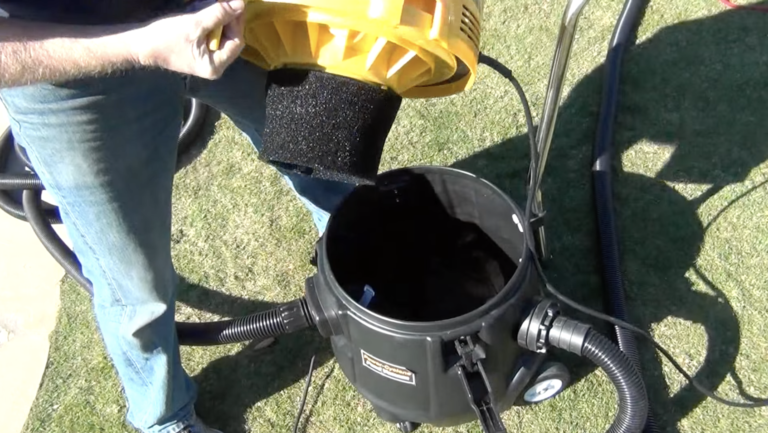What Size Pond Pump Do I Need? A Complete Flow Rate Guide
Are you asking yourself “What size pond pump do I need?” For pond owners, it’s a common question. Pond pumps work to improve water circulation in water bodies, keeping the water in its best possible condition. But, ponds and pumps come in all shapes and sizes. And this can impact the size of the pond pump you need.
In this blog, we’re exploring a complete flow rate guide and how you can use it to choose the right size pond pump.
Flow Rate in a Pond Pump
Flow rate is usually measured in litres per hour (LPH) or gallons per hour (GPH). And why does it matter? It shows you how much water the pump can move through the system of a pond or dam. A flow rate that’s too low can cause the water to stagnate. A flow rate that’s too high? You’re risking the natural balance of the water body.
Calculating Pond Volume and Turnover Rate
Do you want to work out the right flow rate for you? If so, a good starting point is knowing your pond’s volume and how often you want that water to cycle through.
How to calculate pond volume:
- For rectangular or square ponds:
Length (m) × Width (m) × Average Depth (m) × 1,000 = litres - For round or irregular ponds, you might want to use an online pond volume calculator for accuracy.
Recommended turnover rates:
- Fish ponds (koi, goldfish): Aim to circulate the entire volume every hour.
- Pondless water features or waterfalls: Higher flow rates are typically needed for a strong visual effect.
- Wildlife or plant-only ponds: Circulation every two hours is usually enough.
For example, you’ll need a pump that delivers at least 5,000 LPH if your pond holds 5,000 litres and contains fish.
What Factors Affect Pump Sizing?
So, what factors do you need to take into consideration for pump size?
Here are some ideas:
Head Height
The head height is the vertical distance that a water needs to go to in order to suit the requirements of the pond or dam. And this goes from the water surface all the way up to the top. The greater the height, the harder the pump has to work, reducing flow rate as a result.
A top tip from us is to always check the pump’s flow rate chart at different head heights to make sure its performance matches your needs.
Tubing Length and Diameter
The length and size of your tubing affect how easily water flows through it. Long runs or narrow hoses increase resistance, which can lower flow. Using wider diameter tubing helps reduce friction and keep good circulation up over longer distances.
Filters and UV Clarifiers
It may restrict water flow if your system includes a biological filter or UV clarifier. These components add resistance, so you’ll need a pump powerful enough to keep up the desired flow rate, even alongside the added load.
Water Features
Features like waterfalls or fountains often need extra flow to look and function properly. As a general rule, plan for around 1,500–2,000 LPH for every 2.5 cm (1 inch) of waterfall spillway width to achieve a natural, appealing flow.
Pond Pump Flow Rate Guide by Pond Size
Here is a table we’ve put together to help you work out what pond pump flow rate you need, based on your pond’s size:
| Pond Size (Litres) | Recommended Flow Rate (LPH) | Example Pump Size |
| 1,000 | 1,000–2,000 | 1,500 LPH pump |
| 2,500 | 2,500–4,000 | 3,000–4,000 LPH pump |
| 5,000 | 5,000–7,000 | 6,000–7,000 LPH pump |
| 10,000 | 10,000–12,000 | 11,000–12,000 LPH pump |
| 20,000 | 20,000–25,000 | 24,000–25,000 LPH pump |
Energy Efficiency and Pump Types
Energy efficiency is just as important as size, especially for pumps that run all day. Look for pumps with low wattage to reduce electricity costs.
Types of Pond Pumps:
- Submersible Pumps: Installed directly inside the pond, easy to set up.
- External Pumps: More powerful and energy-efficient, ideal for larger ponds.
Choosing the Right Pump Brand: Why Is Messner the Best Choice?
Reliability and performance are what truly matter when you’re investing in a pond pump. Known for its German engineering, quiet operation, and energy efficiency, Messner stands out as a top-tier brand.
Here are some benefits of Messner pumps:
- Lower your running costs with high energy efficiency.
- Enjoy long-term reliability thanks to durable construction.
- Adapt to any setup with options for submerged or external installation.
- Prevent damage with built-in thermal protection.
- Save time on upkeep with easy-access impellers for simple maintenance.
Messner pumps deliver dependable performance that keeps your water healthy and flowing beautifully, no matter the type of water feature.
Final Tips Before You Buy:
- If your pond has a waterfall, choose a slightly larger pump to ensure reliable performance.
- Always check the warranty and service options to have peace of mind about your purchase.
- Confirm your pump works with your filtration system for smooth operation.
Need Help Choosing the Right Pond Pump?
Do you need help choosing the right pond pump? Sometimes, it’s easier to leave it up to the experts. And that’s why we’re here to help you with whatever you need, whether you’re upgrading your existing pond or starting a new project.
Our expert team is ready and waiting to help you find the perfect fit tailored to your pond’s size and features.
If you need a helping hand get in touch with us today or have a look at our website and browse pond pumps to find the best one for you.




